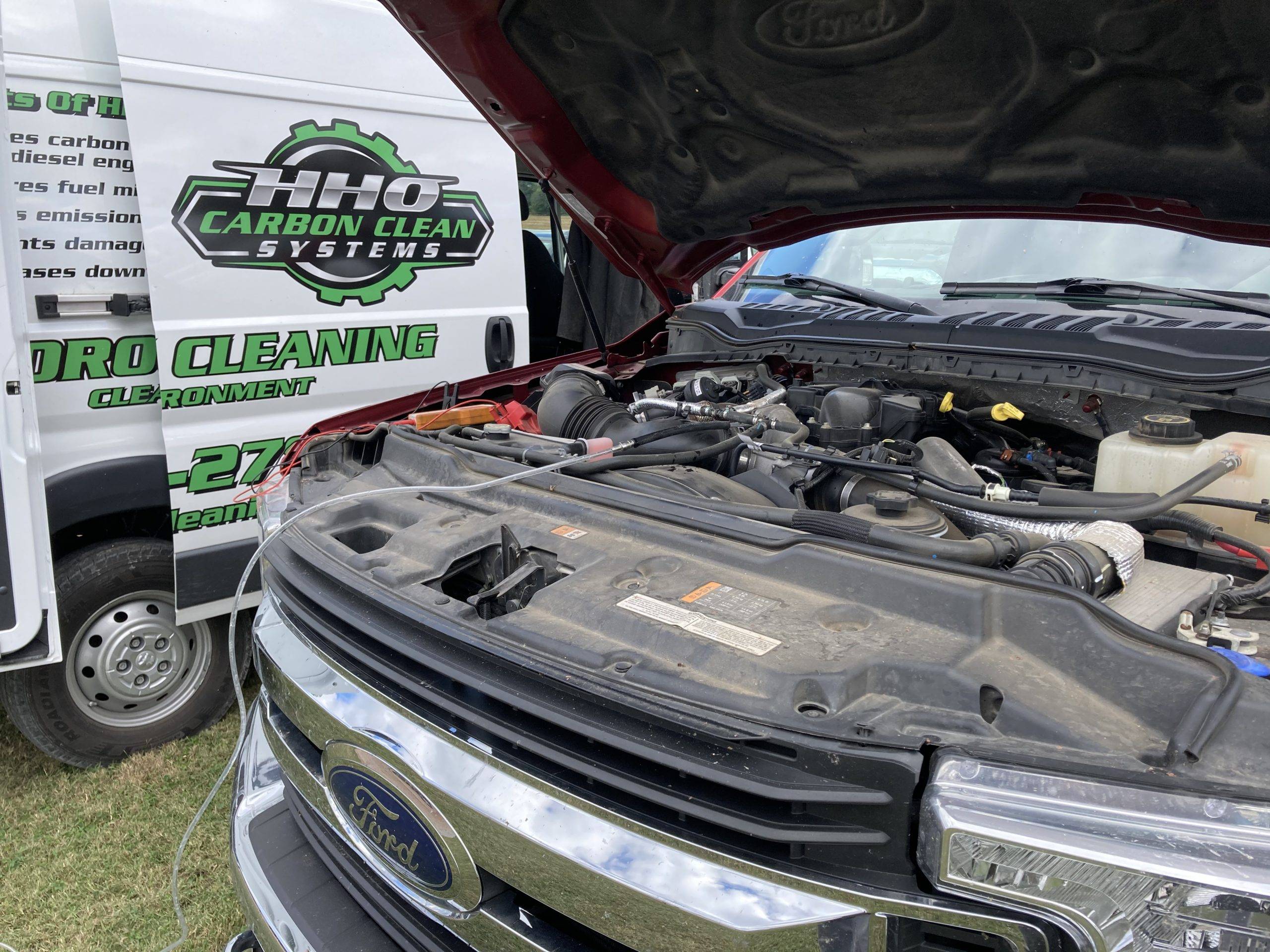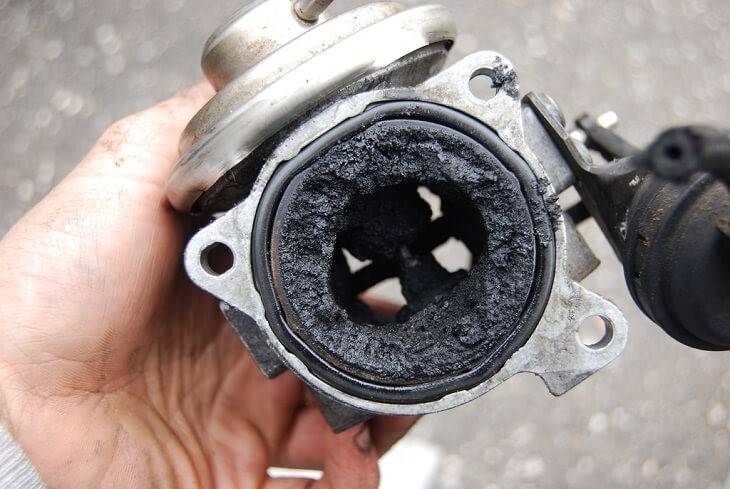Several developments in engines have become standardized as a result of government regulation to lower emissions. As a byproduct, it has caused additional maintenance requirements for components such as Direct Injection engines, and Diesel Particulate Filters (DPFs) because of the carbon buildup. Those advancements have increased the demand for a preventative maintenance service called “carbon cleaning.”
Emission regulation has been the driving force behind engine design since the establishment of the EPA in 1970 by President Nixon. The Clean Air Act established the EPA which immediately began eliminating leaded fuel and required catalytic converters on vehicles. This was a significant and important development since lead is so toxic to humans and the environment. Regulation has increased exponentially since then with increased restrictions in 2004, 2005, 2007, 2009, and 2015. Global efforts are attempting to attain net zero emissions by 2050. With increasing restrictions being legislated, auto manufacturers have made technologies such as valves, Direct Injection (CI) engines, and Diesel Particulate Filters (DPFs) common even though they are prone to issues caused by carbon buildup.

Shortly after the Clean Air Act of 1970, auto manufacturers began including Exhaust Gas Recirculation (EGR) valves. EGR valves recirculate exhaust gas to the engine intake systems for increased efficiency, reduced fuel consumption, and lower NOx emissions. The most common problem with EGRs is carbon buildup. The buildup causes the valve to stick in either an open or closed position, which, in turn, clogs tubes, exhaust gas channels, and eventually value plunger mechanisms. EGRs may need to be replaced at any age of the vehicle because they operate under such extreme conditions. Maintenance specialists expect this part to fail, but it is difficult to diagnose.
Reduced emissions are also part of the driving force behind the quick adoption of Gas Direct Injection (GDI) engines. Direct Injection uses high pressure to inject fuel directly into the combustion chamber rather than spraying it into the intake port. This advancement increased power, lowered fuel emissions, and allowed for leaner mixtures providing increased fuel economy. Though the technology existed since the 1920s, Port Injection (PI) was standard up until 1997 when they were reintroduced by Mitsubishi. Then, over the following years, several other Japanese and European manufacturers introduced them. In the US, only 2.3% of 2008 model vehicles were Direct Injection. By 2016, over 50% were.
The use of Direct Injection comes at a significant maintenance cost that offsets its benefits. Direct Injection prevents fuel molecules from cleaning the intake valves. Valvoline engineer Michael Warholic regularly inspects the inside of engines with a borescope and what he finds is disconcerting, “Without gasoline washing the [sides of valves] clean, oil can bake onto the valve and accumulate into carbon buildup” (Team Valvoline). That buildup can cause issues within 20,000 to 25,000 miles and has a negative effect on fuel economy and power. Chunks of the carbon can break off causing innumerable issues further down the engine such as ignition problems or damage to the catalytic converters. Ultimately, Warlock concludes “It is not something [consumers] should take lightly because it could lead to catastrophic failure.”
Another adaptation in the transportation industry caused by emission regulation in 2009 are Diesel Particulate Filters (DPFs). DPFs collect soot to lower emissions and then under high temperatures “regenerate,” or burn them off. They can cost anywhere between $4,000 and $10,000 to replace. Depending upon the purpose of the diesel truck, they could need replacement every 20,000 miles, though 60,000 miles is more common. If the engine idles often, like school buses, construction equipment, utility trucks, or garbage trucks, then the replacement is more frequent. Even with this inevitable costly repair, DPFs are mandatory on vehicles not just because of regulation, but because the engine is designed to operate with them.
Engineering editor Jay Kavanaugh at Edmunds.com emphasizes that government regulations “… are driving the [automotive industry] in the direction that it wouldn’t necessarily have gone on its own.” Though technological developments like EGRs, GDIs, and DPFs promise positive results like lower emissions, the maintenance costs and breakdowns can be catastrophic. Regardless of the cause, carbon buildup in vehicles is becoming more prevalent and demanding that carbon cleaning services become more standardized as a preventative maintenance service.
What is the solution?
There are multiple methods of cleaning carbon buildup from diesel and gasoline engines. Some are labor intensive and include disassembling the engine to blast components with walnut shells. Others recommend toxic chemical detergents or solvents as fuel additives. The most compelling method that has a proven track record and is the least abrasive is HHO Carbon Cleaning.

The process uses an HHO Generator that turns distilled water (H2O) into an oxyhydrogen gas (H-H-O). The oxyhydrogen gas is then introduced into the air intake of the engine. This increases the density of hydrogen in the combustion equation. The abundant hydrogen reacts with the carbon buildup safely causing a phase change back into a gaseous state. This reaction occurs wherever the carbon is located including the valve heads, DPFs, EGR valves, catalytic converters, cylinders, turbos, pistons, etc. The carbon is then expelled through the exhaust system.
HHO Carbon Cleaning uses no harsh chemicals and is not labor intensive. It uses only a quart of water per service. The process takes 25-45 minutes to complete depending upon the engine size. The most laborious portion of the process is hooking up the HHO Generator to the air intake, which takes less than five minutes to accomplish. Utilized as routine maintenance, this service can save thousands of dollars in fuel costs, maintenance costs, and down time.
What are the results?
The results vary depending on vehicle type, model, age, and how the vehicle is operated. Start-Stop driving, short trips, extended engine idling and frugal driving styles can all prevent engines from reaching optimal temperatures that burn off carbon deposits. And vehicles that have Direct Injection engines, turbos, and DPF filters have the greatest problems with carbon buildup as a byproduct of their design. The service is effective and safe on all internal combustion engines, but the results may vary.
Does this process work as thoroughly as disassembling the engines and scrubbing the carbon buildup off so that all of the components shine? It does not. However, if treated like preventative maintenance with periodic service like oil changes, air filter replacements, or spark plug replacements, it helps prevent engine component breakdown and failure. An HHO Carbon Cleaning operates the same way. Scheduling a service every 20,000 miles or 6 months, helps preserve engine performance and minimize breakdowns of expensive components. Simply put: “clean engines run better.”
Results measured by customers of HHO Carbon Clean Systems have reported:
- Lower emissions up to 70%
- Improved fuel economy between 5 and 10%
- Improved HP between 2-7%
- Lower DPF pressure up to 90%
There has also been university research conducted on the utilization of HHO with diesel or petrol fuels. The research has reflected third-party verification of HHO Carbon Clean Systems’ customers:
- “Results show 9% drop in brake specific fuel consumption (BSFC) and 7% increase in brake thermal efficiency (BTE). The emissions of CO, HC, and smoke have been reduced by 56%, 16%, and 5% respectively for Hydroxy-diesel mixture as compared to diesel alone.”
- “Hydrogen-DEE operation resulted in a higher brake thermal efficiency of 30%, with a significant reduction in NOx compared to diesel.”
- “50% reduction is noticed in NOx, reduction in CO and fuel consumption was observed by 20% and between 20% and 30% respectively.”
- “10% increment in thermal efficiency, 34% reduction in fuel consumption, 14% reduction in HC, 18% reduction in CO, and 15% reduction in NOx.”
Conclusion
Increased regulation on emissions is driving changes in the automotive industry. Lowering emissions is an important consideration with any advancement. And just as we need to adapt to new technologies that solve environmental problems, we also need to adapt new preventative maintenance services to sustain those technologies. Hydrogen Carbon Cleaning is currently the leading service for preventative maintenance on components such as combustion chambers, turbos, and DPFs. It restores engine performance, minimizes downtime, and lowers emissions. When it comes to necessary services to sustain your fleet, a fair principle to stand by is “Clean Engines, Run Better.”

